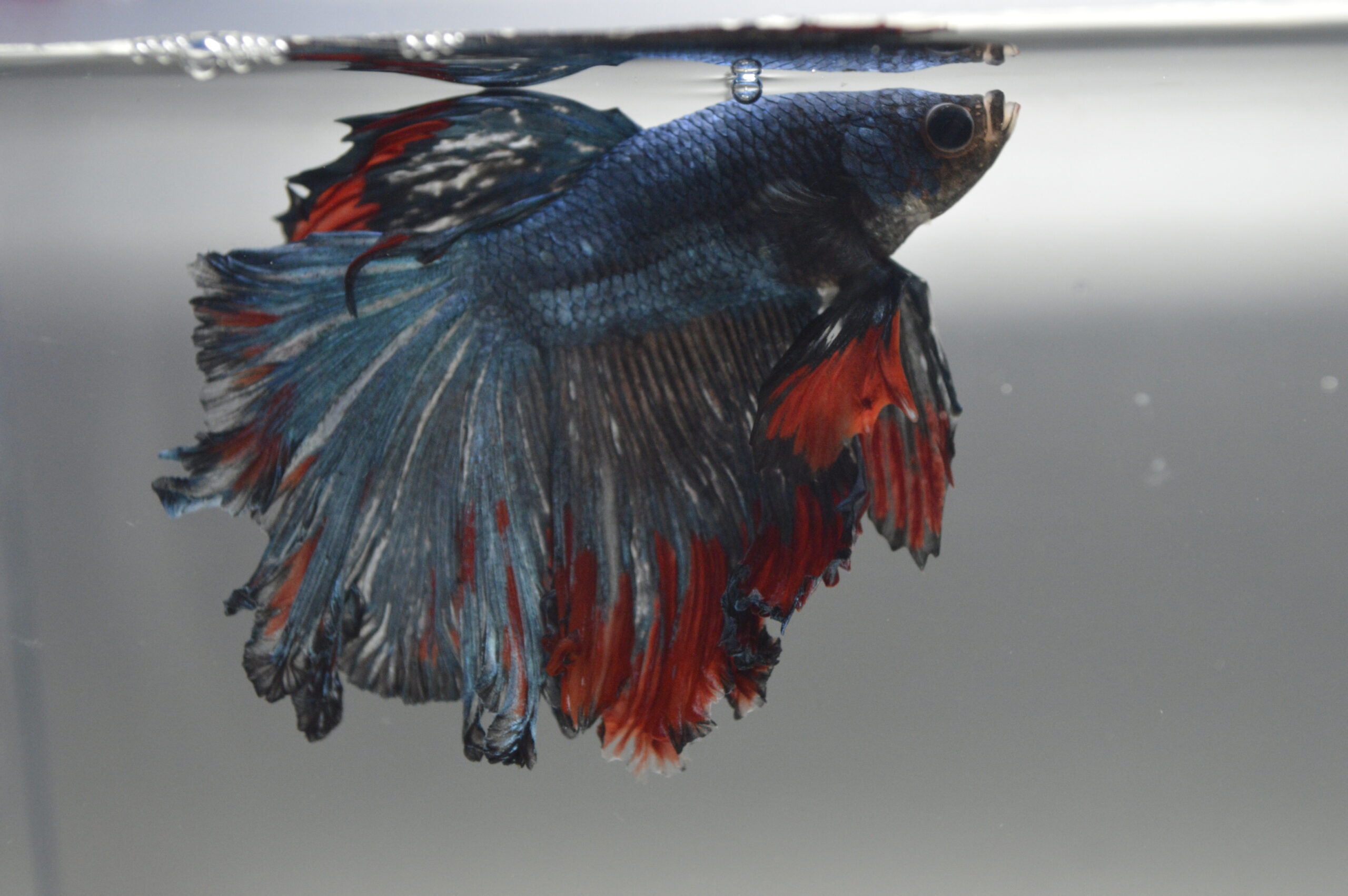Knowing how to identify and treat common health issues your fish may face is essential as a fish owner. One of the most common issues is fin rot, which can be a serious problem if left untreated. This post will cover everything you need to know about fin rot, including its symptoms, causes, and treatment options.
Fin rot is a bacterial infection that affects a fish’s fins and can cause them to deteriorate or even fall off. Several bacteria can cause the condition, but it often starts when a fish’s fins are damaged or weakened by poor water quality or other stressors. Some of the most common symptoms of fin rot include frayed or discolored fins, white or red edges around the fins, and loss of fin tissue.
To treat fin rot, it’s essential first to identify the underlying cause and make any necessary changes to improve the fish’s environment. This may include frequent water changes, adding a water conditioner or aquarium salt, and removing sharp objects or rough surfaces from the tank. Antibiotics may also be necessary in more severe cases, and it’s essential to follow the instructions on the medication carefully.
In addition to discussing the symptoms and treatment of fin rot, we’ll also cover some preventative measures you can take to help keep your fish healthy and avoid future infections. We’ll also answer some common questions about fin rot, such as whether it’s contagious and what to do if multiple fish in your tank are affected. By the end of this post, you’ll better understand fin rot and how to keep your fish healthy and happy.
Understanding Fin Rot in Fish
Fin rot is a bacterial infection that primarily affects a fish’s fins but can also spread to other parts of its body.
Various bacteria, including Aeromonas, Pseudomonas, and Vibrio, can cause the disease. These bacteria are commonly present in aquariums and can cause fin rot when the fish’s fins are damaged or weakened.
One of the leading causes of fin rot is poor water quality. When the water in your aquarium is contaminated with high ammonia, nitrites, and nitrates, it can stress your fish and weaken their immune system.
This can make them more susceptible to bacterial infections like fin rot. In addition, overcrowding, overfeeding, and lack of filtration can also contribute to poor water quality.
Symptoms of fin rot include frayed or discolored fins, white or red edges around the fins, and loss of fin tissue.
In severe cases, the fin may ultimately deteriorate or fall off. However, the disease can progress rapidly, so it’s crucial to identify and treat it early on.
The first step in treating fin rot is to identify the underlying cause and make any necessary changes to improve your fish’s environment.
This may include frequent water changes, adding a water conditioner or aquarium salt, and removing sharp objects or rough surfaces from the tank. You may also need to address your aquarium’s overcrowding or overfeeding issues.
In more severe cases, antibiotics may be necessary to treat the infection.
Following the medication instructions carefully is essential, and you need to continue the treatment until the infection has completely cleared up. It’s also important to isolate any infected fish to prevent the disease from spreading to others in the tank.
Is Fin Rot Contagious?
Fin rot is not contagious, but the bacteria that cause the disease can be.
Therefore, isolating any infected fish is crucial to prevent the disease from spreading if you have multiple fish in your tank.
It’s also a good idea to quarantine any new fish before adding them to your main tank to avoid introducing new bacteria.
How Can I Prevent Fin Rot?
The best way to prevent fin rot is to maintain a clean and healthy environment for your fish.
This includes regular water changes, monitoring water quality, and avoiding overfeeding and overcrowding. Adding a water conditioner or aquarium salt can also help to reduce stress in your fish and promote a healthy immune system.
Inspecting your fish regularly for any signs of fin rot or other diseases is also essential. Early detection and treatment are vital to preventing the infection from spreading and causing more significant health problems.
FAQs
Q: Can fin rot be cured without antibiotics?
A: In mild cases, improving the fish’s environment may be enough to clear up the infection. However, antibiotics may be necessary in more severe cases to treat the disease.
Q: How long does it take to treat fin rot?
A: The treatment length depends on the infection’s severity and the type of medication used. Generally, the disease can take several weeks to clear up completely.
Q: Can I use salt to treat fin rot?
A: Yes, adding aquarium salt can help to reduce stress in your fish and promote a healthy immune system. However, it’s essential to use the correct dosage and to avoid using salt in tanks with certain types of fish, such as scaleless fish.
Conclusion
In conclusion, fin rot is a common bacterial infection affecting fish of all types. The disease is typically caused by poor water quality or other stressors that weaken the fish’s immune system. Symptoms include frayed or discolored fins, white or red edges around the fins, and loss of fin tissue.


